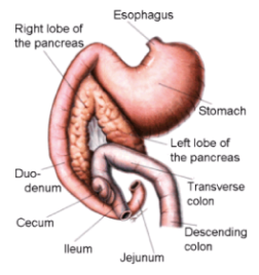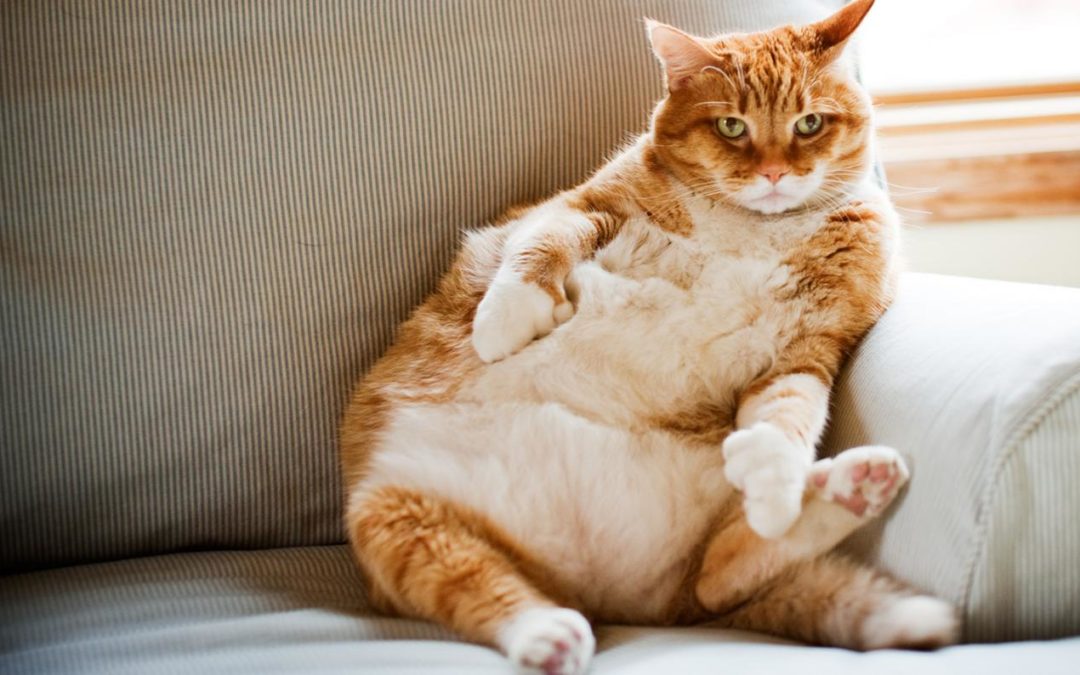 Diabetes mellitus is a common problem in cats. Caring for a diabetic animal requires some effort, but most pets remain happy and comfortable. Successful patient management requires a team effort between you and our veterinary care team.
Diabetes mellitus is a common problem in cats. Caring for a diabetic animal requires some effort, but most pets remain happy and comfortable. Successful patient management requires a team effort between you and our veterinary care team.
What is diabetes mellitus?
Diabetes mellitus is a disease caused by a deficiency of (or lack of response to) insulin. Insulin is a hormone that is produced by the pancreas. The cells of the body require blood sugar (glucose) for food and they depend on the bloodstream to bring glucose to them. The cells cannot, however, absorb and utilize glucose without insulin. Insulin is necessary for the movement of glucose from the blood into the cells of the body.
What are the signs of diabetes?
Excessive thirst, frequent urination, increased hunger, sudden weight loss and weakness are seen in cats with diabetes. Without insulin, glucose remains in the bloodstream and eventually passes into the urine. This causes increased urination, which then leads to an increase in thirst. Hunger increases because the body cannot use the glucose in the blood, which results in the body destroying muscle and fat to use as energy sources. If left untreated, this disease sets off a series of events which results in weight loss, major organ system failure, and eventually coma and death.
Why is my cat diabetic?
Feline diabetes is a complex disease, and most likely genetic and environmental factors both play a role. Many cats with diabetes have a history of chronic pancreatitis, or a disease which affects the body’s response to insulin. We do know that obesity is commonly associated with feline diabetes, along with the use of certain medications, such as steroids.
Is there a cure for diabetes?
Although there is currently no cure for cats with diabetes, some cats undergo remission a few months after diagnosis. This means that the diabetes goes away temporarily, and the cat is once again able to control his or her blood glucose levels. There is evidence to suggest that remission is most likely if the diabetes is treated effectively when first diagnosed.
How is diabetes treated?
Treatment generally requires an injection of insulin under the skin twice daily. Successful treatment also involves a high protein, low carbohydrate diet, generally Hill’s m/d or Purina DM.
What does the insulin do?
Insulin moves glucose from the blood into the cells. Glucose is an essential fuel for most of the tissues in the body, and without insulin, cell metabolism is severely compromised. Providing insulin in the form of an injection allows your cat to be able to utilize its glucose and maintain relatively normal glucose levels.
How do I give insulin?
Our veterinary team will show you exactly how to give insulin injections, but it’s really very simple. The insulin dose it pulled up into a special syringe, and injected under the skin. It is often easiest to inject between the shoulder blades or along the neck.
Do the insulin injections hurt?
Insulin syringes have very small needles, and most cats do not notice the injection. It is often easiest to administer the injection while your cat is distracted with food, a treat, or a toy. Most people are surprised at how easy insulin injections are to give.
How do I dispose of my used supply of needles and syringes?
Used needles and syringes need to be properly disposed of for both your safety and ours. You will be required to purchase a “SHARPS” container for a fee. This fee covers the container purchase, plus the proper disposal of the used/full container.
We will not accept used needles and syringes that are stored in containers other than the approved “SHARPS” container. Once the “SHARPS” container is full, simply return it to our office. We will dispose of it and you can purchase a replacement container.
What follow-up is involved with treating diabetes in cats?
In the non-diabetic cat, adequate amounts of insulin are produced continually (or as needed) by the pancreas to maintain normal blood sugar levels. When we give insulin injections, we administer a fixed amount at one time and that insulin is slowly released over several hours. A blood glucose curve is needed to determine how fast the injected insulin gets into the bloodstream and how long it lasts. Based on these results, we can determine if the correct type of insulin is being used and if the dose needs to be adjusted. Blood glucose curves are needed periodically to insure that the proper amount of insulin is being used. Blood glucose curves are performed by obtaining a blood glucose level every 2-4 hours over a 12 hour period. Generally, if your cat’s blood glucose is elevated throughout the curve, their insulin dose needs to be increased. If your cat’s blood glucose level is too low throughout or at any point during the curve, the insulin dose needs to be decreased.
What are the possible complications associated with treating my cat with insulin?
The most serious complication involved in treatment of diabetes is administration of too much insulin, which can trigger a dramatic drop in blood sugar leading to weakness, nausea, incoordination, seizures, and even death. Immediate feeding of a sugary food (honey, syrup, etc.) usually helps reverse this reaction. Other difficulties encountered generally revolve around finding the correct amount, timing and type of insulin given. While this is not often the case, “problem diabetics” do exist and have a higher incidence of concurrent disease such as lower urinary tract infections, kidney disease and liver disease.
Can I monitor my cat’s blood sugar (glucose) at home?
Learning to measure your cat’s glucose levels is very worthwhile. Firstly, information collected at home is a reflection of what’s happening day to day in your cat’s normal living environment. Cats in particular can become very stressed in the clinic, and their blood sugar levels can become markedly increased. Home glucose monitoring would allow you to be able to perform your cat’s glucose curves at home. Our veterinary team can use the values you obtain at home to adjust insulin therapy more appropriately and accurately. Secondly, if your cat seems unwell, you can quickly determine if blood sugar levels are dangerously high or low. It is very important to always consult our veterinary team prior to making any insulin adjustments.
The thought of glucose home monitoring may seem overwhelming at first, but it is an option to consider and can be started at any time during your cat’s diabetic treatment. Our veterinary team would be happy to demonstrate proper and easy blood sampling techniques and provide a home glucose monitoring kit.
What are the costs associated with treating my diabetic cat?
The major costs associated with treatment of diabetes include insulin, syringes and the cost of the glucose curves to regulate insulin requirements. We can give you more accurate estimation of treatment cost at your consultation appointment.
Our veterinary care team has reviewed the following websites on feline diabetes and find them to be an accurate source of valuable information.
www.veterinarypartner.com
www.alphatrakmeter.com
Making the decision to care for your cat with diabetes is a big commitment, but many owners of diabetic cats have found treatment to be a very rewarding and enriching experience. There is a lot to learn and it is important to be patient with yourself and your cat during the learning process. Diabetes is a serious disease, but it can usually be well-controlled, enabling your pet to lead a happy and comfortable life.

